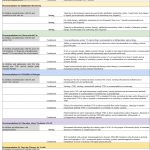What’s Different about Diagnosing JIA?
Adult rheumatologists are used to diagnosing arthritis, and have developed the physical examination of the joints to a fine skill. This skill remains the core of arthritis diagnosis in children as well. Yet, there are some important differences. In adults, the history is at least as important as the examination. Do the joints hurt? Is there loss of function? Is there morning stiffness? Was there preceding trauma? These questions are important since the exam can be obscured by concurrent osteoarthritis and accumulated asymmetry due to injuries, while tenderness can have both inflammatory and noninflammatory causes. In children, symptom history is often limited, especially in the very young—recall that the peak age of onset of JIA is one to four years old. Young children localize pain remarkably poorly, and the complaint of pain is often minimal or even absent altogether.3 Rather, the extent and distribution of joint inflammation must be ascertained by meticulous examination of the whole skeleton, recognizing that children do not always acknowledge tenderness in inflamed joints. Fortunately, children’s joints are generally unaffected by prior injury, simplifying the detection of mild asymmetry that may indicate active or past synovitis.
The examination of the pediatric arthritis patient is different in several other ways. Since inflammation can affect skeletal growth, asymmetry in limb length (especially in the legs) can be an important clue to the presence and chronicity of arthritis. Further, JIA has a predilection to involve the temporomandibular joint (TMJ), potentially with devastating cosmetic consequences. TMJ arthritis in the young child, especially before four years of age, can injure the mandibular growth center adjacent to the articulating condyle, leading to permanent growth impairment and progressive micrognathia. This joint is difficult to examine, and since involvement is rarely symptomatic, any asymmetry in jaw opening must be pursued aggressively (for example, using gadolinium-enhanced magnetic resonance imaging [MRI]) to permit rapid diagnosis and treatment.
Laboratory studies are also typically less informative in children, and may even be misleading. In adults, rheumatoid factor (RF) and especially CCP assays “nail” the diagnosis in at least half of arthritis patients. Further, most untreated adult arthritis patients will have measurable markers of systemic inflammation. Neither is the case in children. RF and CCP are present in less than 10% of JIA patients, and then only in older (usually >10-year-old) patients whose disease is usually obvious. Many oligo-JIA patients will have no abnormalities on blood examination, aside perhaps from a low-titer ANA. Therefore, even more than in adults, the diagnosis of JIA is established by exam, supplemented where indicated by tests such as Lyme serology to exclude alternate diagnoses.


